Valdichiana Senese - Winner 2019
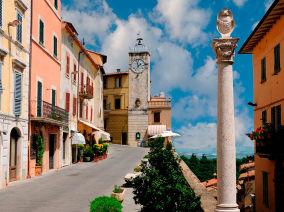
Winner in the ‘Health and wellbeing tourism’ category
The precise borders of the Valdichiana Senese territory are difficult to define, yet it has a very clear, unique identity. Come and immerse yourself in its culture and values: a rich history that blurs into legend, the enduring mystery of the Etruscan civilisation, the therapeutic hot spa waters, the
celebrated wine and food, the elegant architecture and the inimitable natural landscapes. Everything is imbued with a total harmony of living that is the characteristic trait of this territory. The Valdichiana Senese embraces 9 major population centres: Cetona, Chianciano Terme, Chiusi, Montepulciano, San Casciano dei Bagni, Sarteano, Sinalunga, Torrita di Siena and Trequanda.
What makes Valdichiana Senese special
The Valdichiana Senese is characterised by rhythms of life that seem to be forgotten elsewhere. Among the ancient walls of the villages, life goes by slowly, and everyday life is marked by authentic human ties and interactions. A traveller visiting the Valdichiana Senese can regain a real sense of time and human interactions, moments that are lost in the great displacements and the stressful rhythms of life in big urban centres. At the same time, you can also understand the liveliness that animates the territory: the numerous international events and the large number of real people involved in organising them make this destination lively from a cultural point of view.
Health and wellbeing tourism
The thermal waters, the quality of food and wine, the unique landscapes that reflect the balance between man and nature, make the Valdichiana Senese an excellent destination for health and wellbeing. Despite being a minor destination, the Valdichiana Senese can meet your needs and travel motivations, be they food and wine, relaxation and leisure, cultural, exploratory and natural. Among the various traditions, that of the thermal waters is certainly the oldest in the area, considering that it dates back to the Roman era, although it is not the only source of wellbeing. On top of the wellness and spa treatments, the quality of a life makes this destination a ‘land of well-being’. Each experience directly involves local producers and cultural actors, making them your first contacts and the storytellers of the Valdichiana Senese. Among the 10 municipalities, 4 have received Orange Flags (a Touring Club certification). The Orange Flag trademark is assigned to places that enjoy a valuable historical, cultural and environmental heritage, as well as offering tourists a high-quality welcome.
Sightseeing tips
- Guided tasting tour at the historic cellars of Montepulciano, located below the buildings dating back to the Tuscan Renaissance.
- Landscapes of wellbeing tour, including dips in the thermal pools at the Fonteverde Natural Spa, a local farm with low-carbon footprint products and a locally sourced dinner with truffles and other products from San Casciano dei Bagni.
- Gourmet Tour through the Valdichiana Senese including tastes of Pecorino cheese from Pienza, Cinta Senese (a regional pig breed), Pici (local homemade pasta), Tuscan artisan beer, Vino Nobile di Montepulciano DOCG more.
More information
- The official Valdichiana Senese website
- EDEN video about Valdichiana Senese - Winner 2019
- EDEN contact for Valdichiana Senese: info
 stradavinonobile [dot] it (info[at]stradavinonobile[dot]it)
stradavinonobile [dot] it (info[at]stradavinonobile[dot]it)
Guardiagrele, City of Taste - Winner 2015
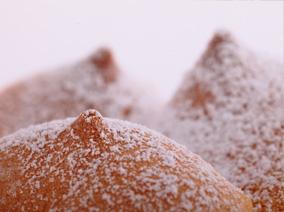
Winner in the Tourism and Local Gastronomy category
Guardiagrele is a town in the Chieti province in central Italy. It is the seat of the Maiella National Park, and is known for its stunning views over the valleys of the park, for its picturesque historic centre, and for its magnificent food and wine traditions.
The town is a destination off the beaten track, still emerging as a tourist destination. Public and private partnerships are making it possible to develop the town as a sustainable development destination, focusing particularly on local agricultural products, gastronomy and wine traditions.
To reach this goal, the town is investing in clean energy and efficient waste disposal, as well as sports and local cultural and touristic events.
Local gastronomy
Guardiagrele is the home of several foods and wines marked with certifications of origin, such asthe Protected Designation of Origin (PDO), the Protected Geographical Indication (PGI) and the Controlled Denomination of Origin (DOC).
In Guardiagrele, the local agricultural products have been reworked according to local tradition, giving visitors an authentic gastronomical experience. With quality guaranteed by the Collegium Cocorum (the Italian Federation of Cooks), the Slow Food organisation and local tradition, passed down through generations of local families, the Guardiagrele gastronomy is a unique experience for visiting tourists.
The Guardiagrele community is particularly attentive to the sustainble cultivation of their agricultural products. With numerous business activities carried out in cooperation with tourism and environmental associations, Guardiagrele focuses on keeping alive its culinary tradition while at the same time protecting the territory and the cultural heritage.
Sightseeing tips
- Participate in the wine events and slow food initiatives
- Enjoy local handcrafts and gastonomic flavors
- Take part in the late summer lunches, when the region becomes one single large lunch table
- Stay up during the White Nights, when local cuisine is offered to late-night visitors in the historic centre
More information
- The website of Guardiagrele
- EDEN video about Guardiagrele
- EDEN contact for Guardiagrele: piergiorgiodellapelle
 gmail [dot] com (piergiorgiodellapelle[at]gmail[dot]com)
gmail [dot] com (piergiorgiodellapelle[at]gmail[dot]com)
Pistoia - Winner 2013
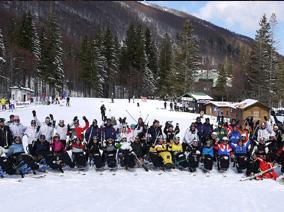
Winner in the Accessible Tourism category
A few kilometres from the more famous destinations in Tuscany, a little off the usual tourist track, with beautiful scenery and a rich artistic and cultural heritage, the province of Pistoia is a real discovery.
Art treasures can be found everywhere, in the beautiful old town centres of Pistoia and Pescia, in the famous spa town of Montecatini with its Art Nouveau buildings, or in the numerous villas. Evidence of a great medieval past can be seen in the many Romanesque churches scattered throughout the old centre of Pistoia. Contemporary art and architecture is also represented.
The Pistoia surroundings are still unspoilt, made up of genuine, picturesque scenery, typical of the Apennines and rich in flora and fauna. Between panoramic points and gentle hills, nature reserves and protected areas, the visitor will travel through splendid woods, come across lakes, valleys, hillocks cultivated as gardens and fields covered with age-old olive trees and grapevines.
The Pistoia area is a land rich in traditions. In the cities and the small villages, all year round, historical re-enactments, religious commemorations, folk displays, festivals and feast days take place, all of which have their roots in the culture of the Tuscan people.
Accessibility
Pistoia is accessible and visitor-friendly. Anybody can easily visit it: people with disabilities, families with young children or elderly people.
The local authorities, together with associations and operators, are committed to making the region easily accessible to all people, regardless of their physical limitations, disabilities or age. Through the project 'Pistoia for all', they have improved the accessibility of tourists services.
A wheelchair friendly walk in the old city, the tactile museum presenting the city through the sense of touching, an underground walk though caverns accessible to people with reduced mobility or visual impairment, and accessible nature rails are just some of many examples.
The guide book Pistoia For All - Guide To Accessible Tourism In The Province Of Pistoia provides plenty of useful data and is also available in Braille and audio edition.
Sightseeing tips
- Visit lakes and canals in the Padule di Fucecchio wetland, and, when the water turns to snow and ice, ski on the mountains of Abetone.
- Stay in the city of arts and discover the Romanesque and the Baroque, medieval art and contemporary art in our museums.
- Take the time to learn about popular traditions in the Ecomuseum of the Pistoia Mountains.
- Enjoy the spa waters of Montecatini and Monsummano where hot springs sooth both mind and body, granting physical relaxation and internal serenity.
More information
- The official website of Pistoia
- See the EDEN video about Pistoia:
- Long version (3 minutes)
- Short version (1 minute)
- EDEN contact for Pistoia: f [dot] fratoni
 provincia [dot] pistoia [dot] it (f[dot]fratoni[at]provincia[dot]pistoia[dot]it)
provincia [dot] pistoia [dot] it (f[dot]fratoni[at]provincia[dot]pistoia[dot]it)
Montevecchio, City of Guspini - Winner 2011
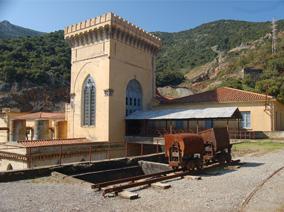
Winner in the Tourism and Regeneration of Physical Sites category
Guspini is a beautiful Mediterranean town situated on the south-west coast of Sardinia.
It is a fascinating town with an immaculate landscape, warm climate and ancient architecture. The Monte Linas, Mount Arcuentu and Mount Maiori mountains dominate the landscape surrounding it. Dunes, woodlands and the Mediterranean Sea add to the beautiful scenery.
The coastline is impressive, stretching 46km, with stunning sandy beaches. In the region there are waterfalls dotted around the town and several forests surrounding it, such as Gentilis park and Perd'e Pibera park, the latter being the largest park in the area.
There are also several interesting places worth visiting just outside Guspini, such as Montevecchio, a small village 10km away from the city. It is one of the oldest mine sites in Italy, and galena was the main mineral. Today, there is an eco-museum in Montevecchio which exhibits the history of the region, its main activities and the everyday life of the locals. Exploring Guspini and its surrounding areas is truly rewarding.
Regeneration and revival
Soon after the mining industry collapsed, the town lost not only its main source of income, but also much of its charm. The upkeep of the town centre was no longer a priority and the effects of the economic decline were visible on the streets of Montevecchio.
Through the regeneration programme which began more than 10 years ago, Montevecchio is today a prosperous tourist destination.
The mines have been converted into tourist attractions. The old buildings with vast architectural heritage have also been refurbished – and the Art Nouveau buildings have been restored to their former glory.
For example, the Direzione, built in the 1870s and designed as a managerial house by Giovanni Antonio Sanna has been renovated and opened to visitors.
A special cultural tour has been designed to bring together different elements of the town: the mines, rural crafts, traditions and residential houses. This integrated approach to showcasing the town’s history has been a huge tourist attraction.
Sightseeing tips
- Take a walk around Mount Maiori, a mountain particularly noted for its beautiful oak forest at the summit.
- Visit Sardara thermal baths, which have been famous for their healing properties since ancient times.
- Take a walk in the San Sisinnio (Villacidro) park with its grove of olive trees up to a thousand years old.
More information
- The official website for Montevecchio, City opf Guspini
- See the EDEN video about Montevecchio, City of Guspini:
- Long version (3 minutes)
- Short version (1 minute)
- EDEN contact for Montevecchio, City of Guspini: sindaco
 comune [dot] guspini [dot] vs [dot] it (sindaco[at]comune[dot]guspini[dot]vs[dot]it), elio [dot] gola
comune [dot] guspini [dot] vs [dot] it (sindaco[at]comune[dot]guspini[dot]vs[dot]it), elio [dot] gola comune [dot] guspini [dot] vs [dot] it (elio[dot]gola[at]comune[dot]guspini[dot]vs[dot]it)
comune [dot] guspini [dot] vs [dot] it (elio[dot]gola[at]comune[dot]guspini[dot]vs[dot]it)
Monte Isola - Winner 2010
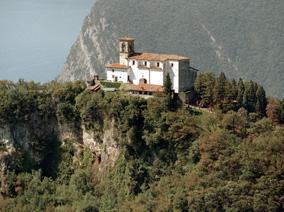
Winner in the Aquatic Tourism category
Monte Isola is the largest inhabited island of the European lakes, in the province of Brescia, in the northern part of Italy.
The municipality has a population of just under 2000 people who live in 11 quaint hamlets. In the various hamlets you will find hallowed churches built between 1400 and 1600, rich in frescoes, statues and altars created by important artists of that time.
Thanks to its peculiarities, Monte Isola has joined the 'Club of Italy's most beautiful villages'. These quaint villages really are worth exploring and can be visited on foot or bicycle along the stunning coastal paths or by boat cruises between the islands.
Throughout the villages you will find photographic panels showing the island's flora and fauna as well as aerial views of the territory. Rich in olive groves, vineyards and chestnut woods, this is a truly romantic destination for visitors wanting to see the real Italy.
What makes the Monte Isola special?
The Lake Iseo is a perfect vacation resort for visitors who seek to discover untouched nature, active recreation and relaxation of their senses in harmony with both nature and local people.
Staying here also means you can explore the wonderful local Italian cuisine of the area, including salami, perch from the lake, polenta made in copper pots and apple desserts.
Sightseeing tips
- Hire bicycles or use local buses to explore the island and villages.
- Visit the Sanctuary of the Madonna della Ceriola at the top of the mountain.
- Take a boat cruise between the islands.
More information
- The official website of Monte Isola
- Watch the EDEN video about Monte Isola:
- Long version (3 minutes)
- Short version (1 minute)
- EDEN contact for Monte Isola: segreteria
 comune [dot] monteisola [dot] bs [dot] it (segreteria[at]comune[dot]monteisola[dot]bs[dot]it), info
comune [dot] monteisola [dot] bs [dot] it (segreteria[at]comune[dot]monteisola[dot]bs[dot]it), info comune [dot] monteisola [dot] bs [dot] it (info[at]comune[dot]monteisola[dot]bs[dot]it)
comune [dot] monteisola [dot] bs [dot] it (info[at]comune[dot]monteisola[dot]bs[dot]it)
Peninsola del Sinis Protected Marine Area and Isola di Mal di Ventre - Winner 2009
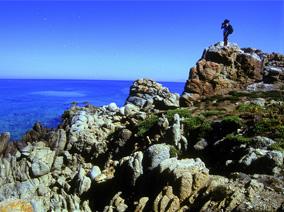
Winner in the Tourism and Protected Areas category
With favorable weather conditions year-round, the peninsula's heterogeneous landscape provides an abundance of opportunities. On the western shores one can walk along long uncontaminated coastlines of white quartz sand or bike along the jagged cliff walls.
There are boat excursions to two untouched islands nearby - Isola Mal di Ventre and the basaltic Scoglio del Catalano, where one can snorkel in the lagoons and catch a glimpse of unique Sardinian fish and reef formations.
For those interested in the making of Vernaccia and Nieddera wines, two notable Sardinian wines from the region, there are tours available. Alternatively, visitors can explore the art of fish-processing and storing of top quality mullet Bottarga.
What makes the Peninsola del Sinis Protected Marine Area special?
Unique events and festivals throughout the year, such as the Corsa degli Scalzi or 'barefoot race', give visitors a taste of the special heritage of this Sardinian region. Traditional food and wine fairs highlight the excellence of local cuisine.
When exploring the Sinis, sightseers can start with a leisurely stroll along the spectacular beaches, at the ruins of the ancient City of Tharros. From there, one can go birdwatching in the adjacent wetlands. It is precisely this sort of contrasting landscapes that unites the sea and the earth in the Peninsula.
Fishing is the region's top industry and measures have been taken to protect local habitats and species from overfishing. Farming is also major industry. Selective waste collection and energy saving measures such as exploring solar energy are highly utilised.
The local community is dedicated to finding environmentally sustainable means to protect coastal dunes and coastal bluffs from eroding. A big initiative is to promote the greater use of bicycles as a means of transportation. Thus far, widespread support to purchase bicycles for rent and create naturalistic routes suitable for cycling has been well embraced.
What to look for in...
- spring: Local farmers connecting with the land
- summer: Flocks of flamingos settling into the Bay of Oristano
- autumn: The barefoot race in the Festival of San Salvatore
- winter: Enjoy fine Sardinian cuisine at the seaside with an early sunset
Other highlights:
- Watching the sun setting behind the jagged cliff walls from the promontory of Capo San Marco
- Tasting local mullet bottarga accompanied by a savoury, dry glass of Vernaccia
- Romantic full moon strolls on the beach
More information
- The official website of Peninsula del Sinis Protected Marine Area
- Watch the EDEN video about Peninsula del Sinis Protected Marine Area:
- Long version (3 minutes)
- Short version (1 minute)
- EDEN contact for Peninsula del Sinis Protected Marine Area: direzione
 areamarinasinis [dot] it (direzione[at]areamarinasinis[dot]it)
areamarinasinis [dot] it (direzione[at]areamarinasinis[dot]it)
Corinaldo - 2008 Winner
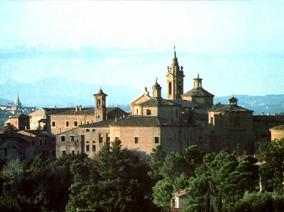
Winner in the Tourism and Local Intangible Heritage category
Corinaldo is a picturesque tourist resort surrounded by the Azure mountains of the Apennines and by the Adriatic Sea. Its velvety beach makes it a charming town of alluring glamour. It is strategically built on a hillside, with a wealth of old brick houses to be found in the districts of St Isidoro and Nevola.
The 'Marches' region of Corinaldo represents a vivid example of Italian garden landscapes with neatly marked out fields and cultivated meadows. The town has preserved valuable collections of artworks as well as a network of more than 70 still flourishing historic theatres.
Built on what was left of the Roman city Suasa, of medieval and renaissance origin, Corinaldo’s baroque and neoclassic buildings stand alongside fortifications and military architecture such as Porta San Giovanni and Porta di Santa Maria del Mercato dating back to the 14th century.
It has a stunning brick periphery and is famous for being the birthplace of the young martyr St Maria Goretti. Its historical centre, old buildings and aristocratic palaces stand out in all their original splendour such as in Piazza del Terrono.
History and architecture
There are many religious monuments in Corinaldo – like the St Maria Goretti sanctuary and the churches of Suffragio and Addolorata that date back to the 17th and 18th centuries.
The sanctuary of the Incancellata and the early Christian basilica of St Maria in Portuno are located in the archaeological site of Madonna del Piano, which is decorated with beautiful 15th century frescos. The church of Addolorata is also a fine example of Rococo architecture.
Corinaldo’s buildings and sanctuaries represent a valuable artistic patrimony. The extensive Claudio Ridolfi Art Gallery reflects Corinaldo’s historical and cultural heritage and is situated in the former convent of the Benedectine nuns of St Ann.
The town’s theatre Carlo Goldoni is worth a visit with its marvellous coffered ceiling.
A walk through the town takes you to Cassero Square and the magnificent 15th-century pentagonal tower, the Sperone. Via Piaggia with its 109 steps and the massive towers of Calcinaro and Rotonda are town highlights.
Corinaldo is particularly proud of the precious pieces of artistic local handcraft that are kept in the folk traditions and costumes hall located in the heart of its historic centre. The Polio of St Ann takes place at the end of July and celebrates and awards local handcrafts.
Local specialities
Corinaldo boasts a number of delicious gastronomical specialities, tasteful dishes prepared with traditional ingredients and typical foodstuffs produced by local farmers. Among these are the tantalising extra virgin oil, select wines, honey, sausages and a remarkable variety of bread.
The most original local produce is 'Le pecorelle' ('the little ships') which are sweet cakes prepared according to a secret recipe that has been handed down through the generations.
Festivals and events
Throughout the year, many events and festivals keep the town alive, like the Corinaldo Jazz Festival, the Mario Carafoli National Photography Competition, the Cantar Lontano International Music Festival, the local and traditional produce fair Corinaldo Tipica, and the St Maria Goretti celebrations. There are also theatre representations all year round.
The Polenta Well contest, relating to Corinaldo’s victory in the 16th century, is the most ancient and evocative historical commemoration of the province of Ancona and lasts four days around the third Sunday of July.
More information:
- The official website of Corinaldo
- Watch the EDEN video about Corinaldo:
- Long version (3 minutes)
- Short version (1 minute)
- EDEN contact for the Corinaldo: sindaco
 corinaldo [dot] it (sindaco[at]corinaldo[dot]it)
corinaldo [dot] it (sindaco[at]corinaldo[dot]it)
Specchia - 2007 Winner
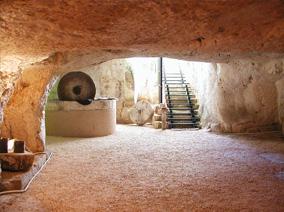
Winner in the Best Emerging European Destination of Excellence category
Specchia is located in the southern part of Italy (Province of Lecce, Puglia Region), in the heart of the Cape of Santa Maria di Leuca, which is the border point separating the Ionian Sea from the Adriatic Sea. It is a site of great natural and cultural value and an important centre for the rural economy of the region.
Specchia is a shining example of a place where tradition meets innovation. For example, there is the Protonobilissimo castle, which dates back to the 15th century, as well as a public access Centre for Advanced Digital Services.
Thoughtful restoration
On the traditional side, all over the historical centre of the city the telephone and electric cables have been removed from the fronts of the houses and the old basolis paving has been restored to its 19th-century appearance.
During the restoration of the old houses in the medieval centre, Albergo Diffuso (Diffuso Hotel) was created. It operates throughout the whole year and offers hospitality to many tourists from all over the world.
The local administration has also restored and recovered some other historical and architectural heritage of great value, such as various underground oil mills (caves were once used to produce olive oil) and an old tobacco store in the village of Cardigliano.
Within Protonobilissimo Castle old merges with new, as it now houses a new local multimedia library and film archive. These projects were realised with the aid of the International Council for Film Television and Audiovisual Communication of UNESCO (ICFT-UNESCO).
Traditional farm activities have been converted into the new officinal herbs sector, maintaining an important historical part of Specchia’s economy. This industry has flourished in Specchia, where it produces and processes the officinal herbs then distributes them into specialised shops.
A sustainable way of life
The quality of life in Specchia is high, thanks to both the interest and activity aimed at preserving the historical, architectural and natural heritage (such as woods and important plants), and the interest and activity of improving its standards in terms of sustainability:
- An example of the sustainability effort is the new tourist centre that functions as an ecovillage, as it uses green sources of energy such as an Aeolian set and a photovoltaic field.
- Gastronomy is also very important. Specchia has recovered many of the old recipes and typical products belonging to the rural gastronomic inheritance of the territory, which are highly appreciated by the visitors. At the table, the area of Leuca, including Specchia, is synonymous with Mediterranean diet.
The base products of the gastronomy of this area are similar to the ones of the other Mediterranean basin countries: olive oil, tomatoes, pasta, herbs and vegetables. The differences between the cuisines are the way these products are used, the supplementary value that each population attributes to the food and the dishes that are cooked and prepared every day for the joy and delight of the inhabitants and tourists. - In the field of culture, the administration has realised the restoration of a former Black Franciscan friar’s convent, dating back to the 15th century. A university foundation has opened an excellent educational centre here, offering several degree courses: Tourism Sciences, a Master in Ethic and Social Responsibility, a Master in Energy Management and a Specialisation Master in Medicinal Herbs.
- Lastly, an important international exchange project for young people has been attracting participants from Specchia and other villages in Finland, Germany, Hungary and Poland since 2003. This project has been a wonderful and much desired cultural exchange between European societies. The group that has formed out of this project has the ambition of creating a village for Europe where young people working on common projects can meet.
More information
- The official website of Specchia
- Watch the EDEN video about Specchia:
- Long version (3 minutes)
- Short version (1 minute)
- EDEN contact for Specchia: segreteria
 comune [dot] specchia [dot] le [dot] it (segreteria[at]comune[dot]specchia[dot]le[dot]it)
comune [dot] specchia [dot] le [dot] it (segreteria[at]comune[dot]specchia[dot]le[dot]it)
